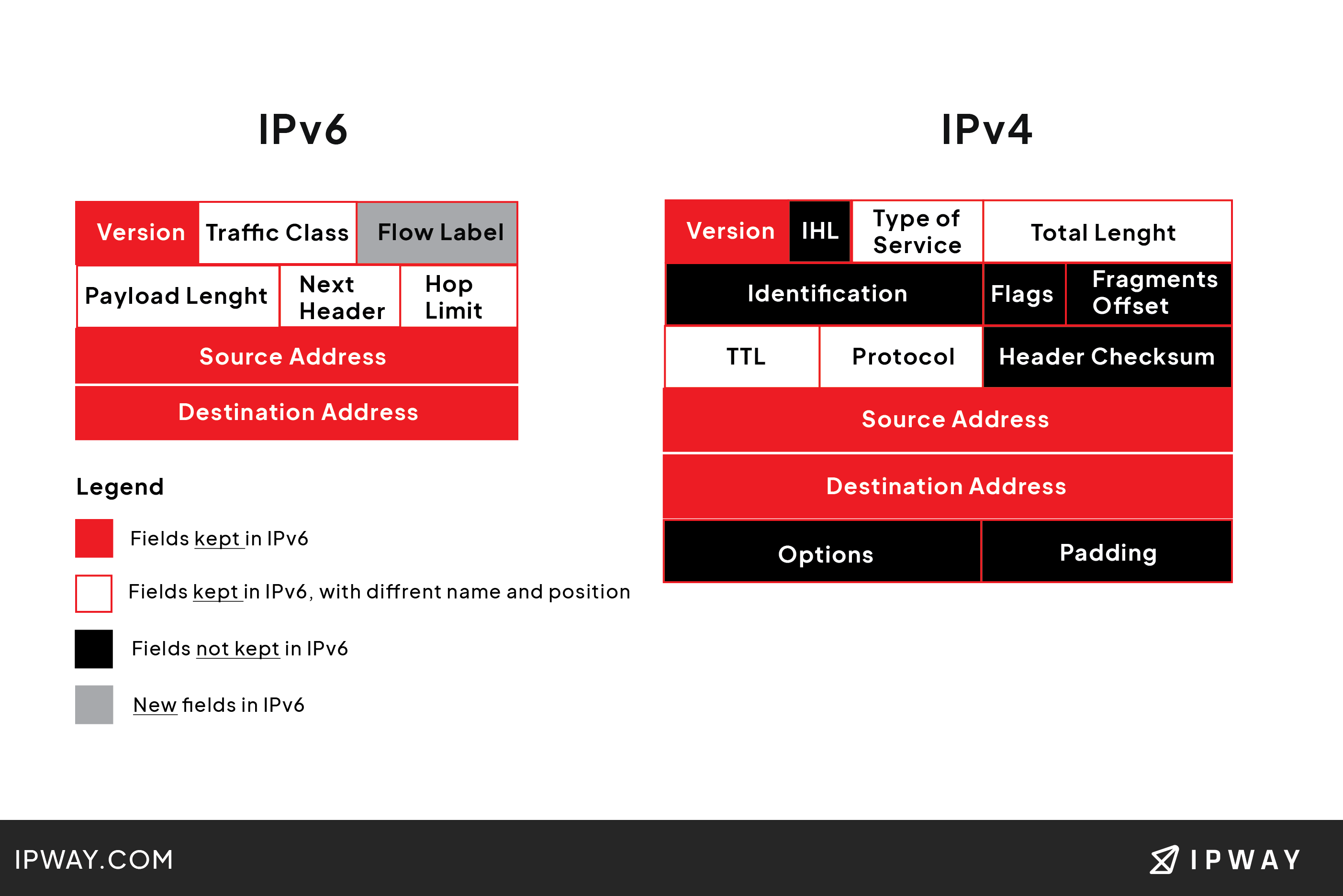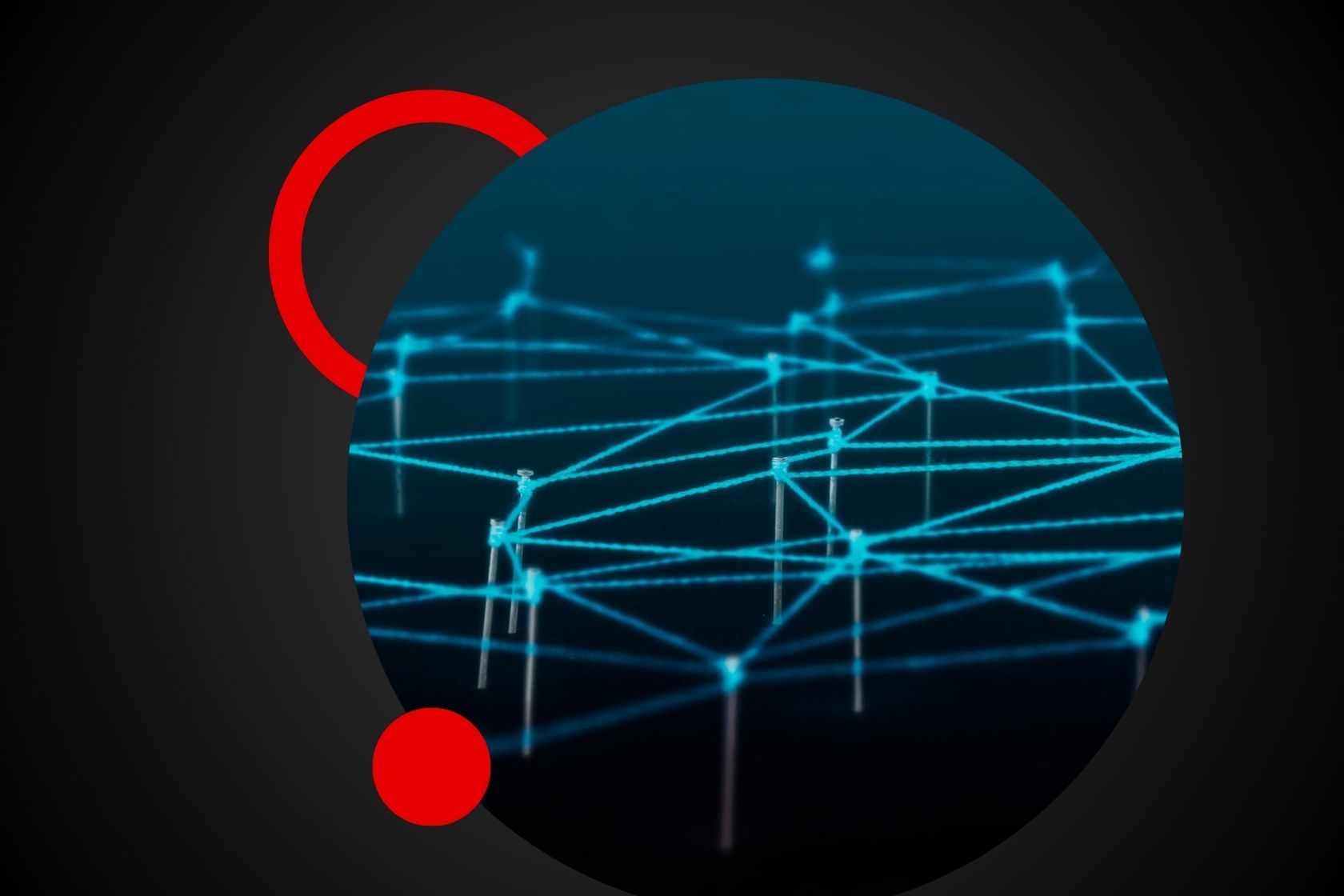By now you sure must know that each device active on the Internet needs an IP address. Just as you can track a house by its street name and number, so can you identify all the equipment that have Internet access through an IP address.
Such IP addresses come in different types, like dedicated static or rotating shared, for example, but the most common and important aspect you need to know is that accessing the Internet is done via IPv4 or IPv6 addresses. Each one has its own strengths and weaknesses. Not only that, but they are also constituted differently. Therefore, in the following sections we will cover the most important technical aspects regarding IPv4 and IPv6 addresses: Their constitution, their use, thow they are implemented, and whether one of them will become the modern standard in networking.
General aspects pertaining to IPv4 and IPv6 addresses
The most used IP addresses are IPv4. This is is the fourth version of Internet protocol and it is limited at 32-bit address space offering 4,294,967,296 (232) unique addresses written in dot-decimal notation containing four octets expressed individually in decimal numbers and separated by periods. An example of an IPv4 address might be 198.162.6.9.
Time has shown us that the fourth version failed to anticipate the huge evolution of the Internet and the ever growing need for more and more IPv4 addresses. Therefore, its successor was introduced as a replacement that should offer not only a higher number of IP addresses, but also a number of technical upgrades.
The sixth version uses 128-bit addresses allowing 2128, or approximately 3.4×1038 total addresses. They are represented as eight groups of four hexadecimal digits each, separated by colons. An example of an IPv6 address might be 2001:0db8:85a3:0000:0000:8a2e:0370:7334.
Thanks to its huge flexibility given by the 128-bit format, IPv6 should cover without any effort all the needs for an IP address of the Internet networks in the following years. But in reality, things work differently and in a very interesting manner.
In the present context of IPv4 scarcity, the transition from IPv4 to the next iteration should have already happened a long time ago. But it appears there are strong reasons that still keep companies and networks from stepping into the new standard. Let’s see what are some of the particular advantages of each one .
Comparing the particularities of the two versions of the Internet Protocol
The infographic below shows an interesting way of comparing the two. Simplicity could be an argument for IPv4. For sure it is easier to use and recognize a 32 bit dotted decimal than a hexadecimal IPv6 number. The fourth version has 576 packet size bytes with optional fragmentation, while the “newcomer” has 1208bytes required size without fragmentation.

In terms of technical support, network operators are familiarized with the IPv4 traffic. In addition, it can be handled easily. Even if all big networks are already prepared to accommodate IPv6 in their infrastructure, IPv4 still rules the game.
An advantage IPv4 has over its sibling is that it supports VLSM (Virtual Length Subnet Mask), offering the possibility of dividing IP addresses into different size subnets.
Security is an aspect where IPv6 should theoretically score against IPv4. The new version was built to offer a higher level of security, IPSec (Internet Protocol Security) being fully integrated. Even if in its beginnings IPv4 didn’t offer the perfect solution security-wise, over the years it has been enhanced with several updates, so the difference between IPv4 and IPv6 security is not that significant. The same IPSec in v6 is now available for IPv4 and it is up to network providers and users if they choose to use it or not.
With respect to topology, the IPv4 protocol can be easily included in most topology drawings, which is not the same for the newer version. IPv4 has simple prefixes that help it fit in.
Autoconfiguration is an important aspect of IPv6 because it allows stateless address autoconfiguration (SLAAC). With IPv4, you needed a DHCP (Dynamic Host Configuration Protocol) server to assign an IP address to a device. With the new iteration, the device can obtain the network ID (the first 64 bits) from the router and generate its own host ID (the last 64 bits) to create a full IPv6 address. In case you have a dual-stack IPv4 and IPv6 network, you still need a DHCP server for IPv4 management and also you need the server to provide your devices with all the other DHCP options.
The Internet Protocol 6 provides interoperability and mobility capabilities which are embedded in network devices. Due to the limited IP address space, IPv4 implemented a special IP protocol for mobile devices called Mobile IP (MIP) which uses triangular routing. On one hand this solution solved the problem of mobile devices, but on the other hand it was inefficient and it created a lot of additional traffic. IPv6 uses a direct routing solution. When the device is roaming, the home network is only used to advertise the device’s new IP address, so that it can be contacted directly, avoiding any unnecessary “traffic jam”
Regarding speed, in theory, sixth generation should be a little faster since cycles don’t have to be wasted on NAT (Network Address Translation). Unfortunately, this supposed advantage is slowed down by the larger packets of IPv6. Furthermore, IPv4 networks are very well optimized, more than IPv6 networks are at the time. Nowadays, both addresses deliver the same result at speed tests.
Another important difference between these two is that in the new version there are no broadcast messages while multicast is a base specification. This offers more efficient network operations.
Since the new standard comes with a larger package of IP addresses than IPv4, it also provides an easier end to end communication. NAT (Network Address Translation) offered IPv4 a solution to prolong its life, but at the same time it was an obstacle to application development, an obstacle that’s not easy to cross sometimes. Avoiding NAT through IPv6 usage facilitated faster development times, more efficient applications, and conserved resources.
The future of IPv6 allocation
At the end of the day, there are indeed quite some strong facts that argue for v6 replacing the IPv4 standard. However, one should note that, even if IPv6 would come to replace the popular fourth version, the latter still has its indisputable advantages. For the predictable future, IPv6 will eventually replace IPv4.
This process of adoption grows by 5% each year. It is interesting to note that the usage of IPv6 addresses across the world fluctuates. IPv6 adoption is coming slowly but surely. Google’s Per-Country IPv6 adoption statistics (September 2021) show that India is the number-one country in the world by IPv6 adoption at 62.82%, followed by Malaysia (54.56%), Germany (50.91%), Taiwan (48.39%) and Vietnam (48.58%). The US is currently at 45.75%. As of April 2022 ,Google’s statistics indicate IPv6 availability of its users at around 34–38%. However, this depends on the day of the week. Until then, IPv4 still has a lot to offer, with 2021 having seen a total of 3.37 billion public IP addresses allocated.
